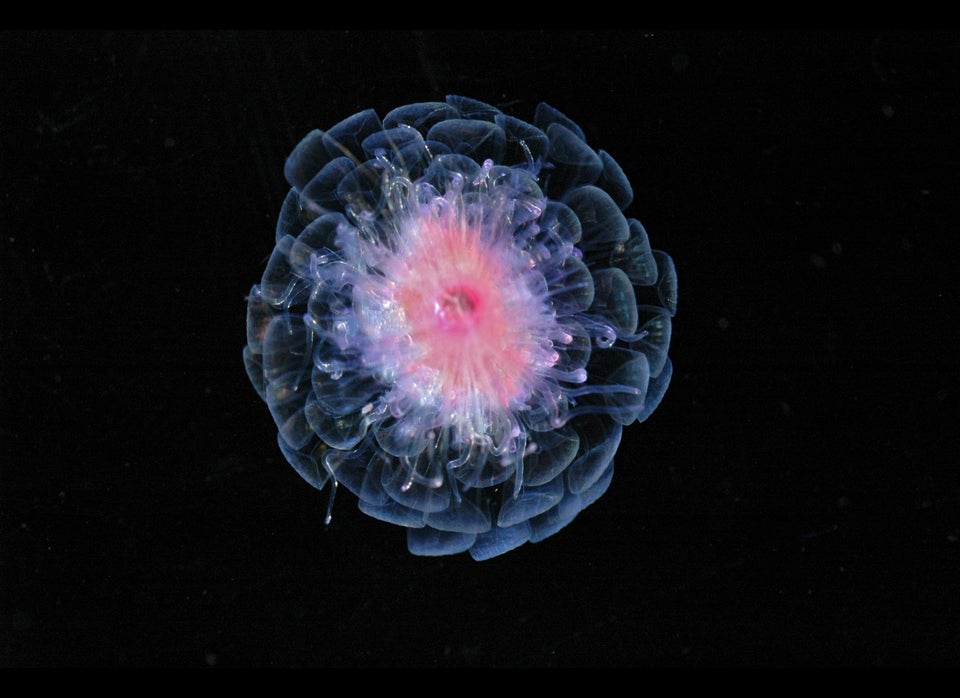What Fish Swim In Schools
How do fish swim in schools, effortlessly coordinating their every move? The answer appears to be ingrained in their genes.
The genetic basis underlying the circuitous, social behavior of schooling is revealed in two studies published Sept. 12 in the journal Current Biology. The studies suggest that schooling is not a learned beliefs, and instead prove it relies on several regions of the fish genome.
The findings may point to the genetic underpinning of why humans besides are social, and tend to gather in groups, some experts said, although others debated this.
Stickleback to school
Most fish exhibit schooling during some phase of their life cycle, enquiry has shown. Fish evolved to swim in schools to better protect themselves from predators, improve their foraging and swim more efficiently.
Unlike shoaling, in which fish merely swim loosely together, schooling requires coordinated trunk positions and synchronized motility. Fish in schools demand to sense their surround with loftier accuracy, maintain awareness of their position within the school, and reply chop-chop to changes in both water currents and move of the group.
Exactly how fish pull off this feat has remained elusive.
In 1 of the new studies, researchers led by Catherine Peichel, a homo biological science researcher at the Fred Hutchinson Cancer Inquiry Center in Seattle, studied sticklebacks, small fish about 3 inches (8 centimeters) long that live in both salt and fresh water. [Photos: The Freakiest-Looking Fish]
The researchers created a handful of false fish models, suspended them in the water and whirled them almost, to entice the existent stickleback to join schools.
By crossbreeding ane kind of stickleback prone to schooling with some other kind of stickleback more than reluctant to join a school, the researchers identified two genomic regions in sticklebacks associated with schooling. One of these regions is also associated with development of a highly specialized sensory structure unique to fish, known as the lateral line, which can detect vibrations in the water.
The lateral line is made upwards of cells called neuromasts, which are like to the hair cells found in the homo ear and enable the fish to sense changes in water currents and answer accordingly.
In the second written report, researchers led by Clifford Tabin of Harvard Medical School in Boston studied the Mexican tetra, a freshwater fish besides about 3 inches long that lives in open rivers and lakes, and sometimes in the streams of caves. The cave-dwelling diversity is blind, and largely albino.
The surface-dwelling tetra swim in schools, but the blind cavefish practice not, which suggested to the researchers that vision is important to schooling. But later on crossbreeding the two varieties and conducting a genetic analysis, the squad adamant that every bit the cavefish evolved, they lost the ability to school, and they lost their vision in divide events.
This provided more evidence that schooling beliefs is genetic-based and not learned, the researchers said.
Both enquiry teams identified only genetic regions, non the exact genes, controlling the schooling behavior.
Of fish and men
The teams remained split, however, on how these findings may relate to humans. Anna Greenwood, a member of Peichel's team, said the findings could be applicable to complex social human behaviors.
"Considering an evolutionarily shared neural excursion, as well as some of the same neurochemicals and hormones, command social behavior in all vertebrates, what we learn almost genetic changes in fish could ultimately provide insight into human behavioral variation," Greenwood told LiveScience.
Hans Hofmann, a professor of integrative biology at the Academy of Texas at Austin, who was not involved in either study, said the stickleback work rebuts the assertion that human beliefs is too complex to understand.
"I think information technology shows that fifty-fifty such circuitous behaviors associated with other individuals in a very rigid and organized mode can be dissected genetically," Hofmann said. "Studies like this tell us that we might become there somewhen."
Tabin, nonetheless, said the findings of his Mexican cavefish study "exercise non tell us anything at all almost human social behavior."
Simply he also said that both studies can tell researchers much about the evolution of schooling behaviors in fish, and that's what makes it worthwhile.
Follow LiveScience @livescience , Facebook & Google+ . Original article on LiveScience .
Copyright 2013 LiveScience, a TechMediaNetwork company. All rights reserved. This fabric may not be published, broadcast, rewritten or redistributed.
Before You Go

About Bizarre Deep-Bounding main Creatures
What Fish Swim In Schools,
Source: https://www.huffpost.com/entry/fish-schools-genes_n_3947303
Posted by: phillipsvild1979.blogspot.com


0 Response to "What Fish Swim In Schools"
Post a Comment